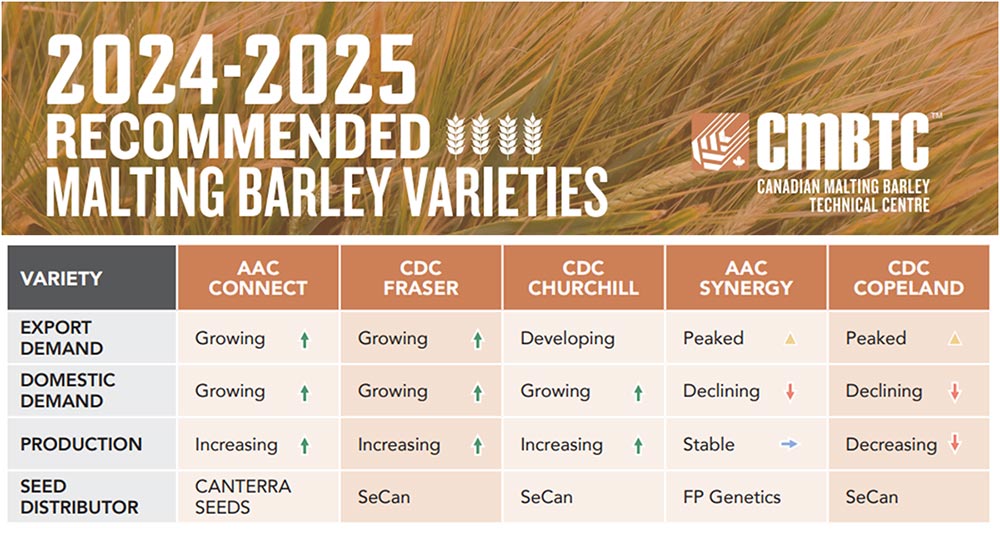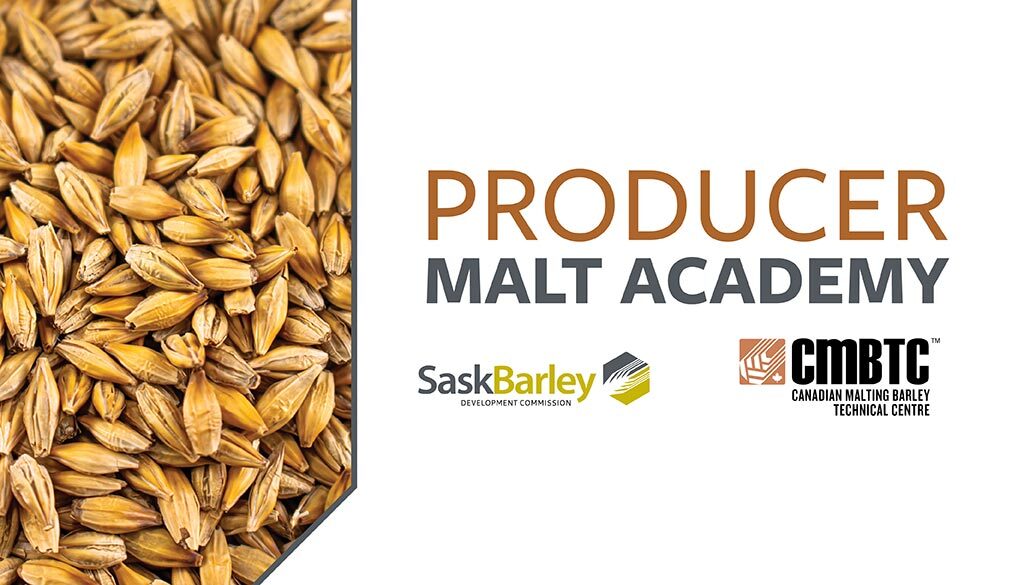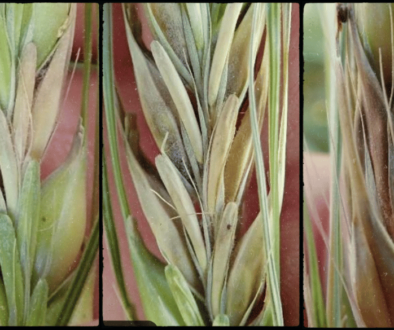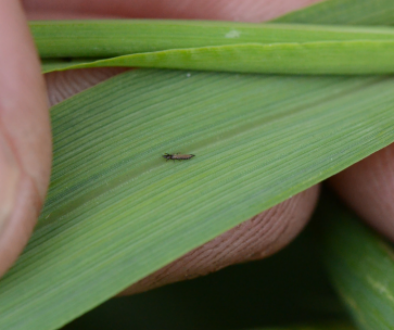A Quick Checklist for Planting Malt Barley this Spring – A Synopsis from the Producer Malt Academy
By Mitchell Japp, Research and Extension Manager
The Producer Malt Academy, hosted by the Canadian Malting Barley Technical Centre (CMBTC) and SaskBarley, took place March 20 – 21 in Saskatoon, SK. This event is a condensed version of the CMBTC’s intensive Malt Academy training institute in Winnipeg, MB, that provides students with a variety of training relating to the malting barley and malt industries.
Below are a few key takeaways for producers looking to plant malt barley this spring.
- Pick a good variety. CDC Copeland has been dominant this past decade, but is now in decline. There are several new varieties that are excellent replacement options. All of the varieties on the CMBTC Recommended List have contract options offered by multiple malt buyers. They are all agronomically superior to CDC Copeland as well, with improved yield, lower protein, improved lodging resistance and better disease resistance. All of these factors make these varieties more profitable on the farm.

- Do your part to maintain varietal purity. Malt buyers have a requirement of 95% varietal purity, or better. Farmers managing a single variety require fewer steps to ensure varietal purity than farmers growing more than one variety or in the process of transitioning between malt barley varieties. Certified seed is inspected for impurities and does not pass if the pedigreed production is not pure. It is the only way to ensure you start with good varietal purity. Once on the farm, be sure to take steps to maintain that purity.
- Test your seed. SaskBarley participates with several other commissions and seed labs to summarize seed testing results each year. Early results are available here. The seed test results give you an indication of what to expect and watch out for, but seed testing is recommended for all seed lots, including certified seed. It is necessary to have the germination rate to calculate seeding rates and disease testing is important to guide decisions about seed treatments.
- Make sure you have enough seed. Calculating seeding rates is important to ensure you have at least an adequate and preferably an optimum plant stand. The general recommendation for malt barley is a plant stand of 20-22 plants per square foot. But, in drier areas, a lower count may be more suitable. Conversely, in areas where moisture is more available a higher rate may be preferred to target improved uniformity and better weed competition.
- Plant early. In most areas, malt barley is most successful when planted early. It can lead to increased yield, lower protein, better harvest conditions to avoid chitting and other fall management issues, lower leaf disease, less lodging and increased likelihood of selection for malt.
- Ensure adequate fertility. Recent research funded by SaskBarley and Saskatchewan ministry of agriculture and managed by the East Central Research Foundation, has shown that the newer barley varieties are able to respond more effectively to increased nitrogen rates compared to older varieties. And, in situations where higher yield is a possibility, increased levels of management can be beneficial. Learn more.
The Producer Malt Academy is a great opportunity to learn more about the malt industry. Farmers who have attended seem to really value the insights into how malting works and why malt buyers have such exacting specifications for their malt. The quick summary above is a portion of my presentation on malt production. The other presentations ranged from malt selection to brewing specifics, complete with samples.





